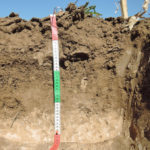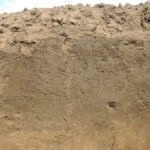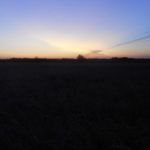Gorokhova I.N., Pankova E.I. Methodological Approaches to Assessing the State of Irrigated Land in the Dry Steppe Zone of the Volgograd Region Using Satellite Images // Ecosystems: ecology and dynamics. No 1. 2023. P. 38-65. | Abstract | PDF | Reference
- Weed forbs on a perennial fallow of the Raygorodsky irrigated area, Svetloyarsk Irrigation System, Volgograd Region, June 2016 (photo by I.N. Gorokhova)
- Ley in the “Chervlenoe” irrigated area, Svetloyarsk Irrigation System, Volgograd Region, August 2017 (photo by I.N. Gorokhova)
- Onion growing in the irrigated fields of the Duboovrazhny irrigated area, Svetloyarsk Irrigation System, Volgograd Region, July 2018 (photo by I.N. Gorokhova)
- Withered stubble of harvested wheat on an irrigated field of the Volga-Don Irrigation System, Volgorad Region, September 2019 (photo by I.N. Gorokhova)
In this article we present the materials of studies that were carried out in the Volgograd Region. They can be used as the basis for methodological recommendations to map and determine the area and condition of irrigated lands using satellite images. They were obtained during the long-term researches in the irrigated lands in the Volgograd Region that took place on solonetz complexes in the dry steppe. Satellite imagery will help to map and determine 1) the areas of irrigated lands, 2) the areas and age of fallow lands in irrigated territories, 3) the state of irrigated soils and factors that limit their fertility. Crops growing in different hydrogeological conditions react differently to those limiting factors. Therefore, to compile a map it is recommended to adhere to such stages as identifying fields with different crops and fallow lands; highlighting patches in the images with sparse or absent crops; on the basis of field researches and analyzed soil samples, establishing the cause of the patchiness; selecting an algorithm for processing satellite images based on the results of field researches. The patchiness of irrigated fields, reflected in the images, can have a different origin, so their interpretation requires a mandatory study of the characteristics of the chosen area. Patchiness associated with secondary and residual salinization of soils is determined by the state of vegetation; therefore, the pictures should be taken during the period of high vegetative activity of plants. Among other things, it is necessary to obtain data on the level of groundwater, because its critical level is the main cause of secondary salinization. For deeply saline soils, it is necessary to build a salt map using interpolation of point data that was obtained in the field and laboratory. Patchiness associated with the carbonate content in the surface horizon does not depend on the level of groundwater and is best seen on the images showing an open soil surface. The accuracy of the map is checked by comparing it with maps of a larger scale and field observations, as well as by evaluating the accuracy of the classification of the image by determining the verification indexes. The materials presented in our article are intended for a wide range of specialists who use space information in their work, as well as for soil scientists, agronomists and chemists who work in agriculture in the southern regions of Russia.
Keywords: dry steppe zone, irrigated lands, saline soils, satellite imagery, mapping of irrigated soils.
Funding. This work was carried out for the State Assignment No. 0439-2022-0009 “To Study the Transformation, Evolution and Degradation of the Soil Cover of Agricultural Landscapes at Different Organizational Levels, Including Intra-field Heterogeneity Using a Combination of Ground Surveys and Digital Technologies”.
DOI: 10.24412/2542-2006-2023-1-38-65
EDN: BLIRXH











